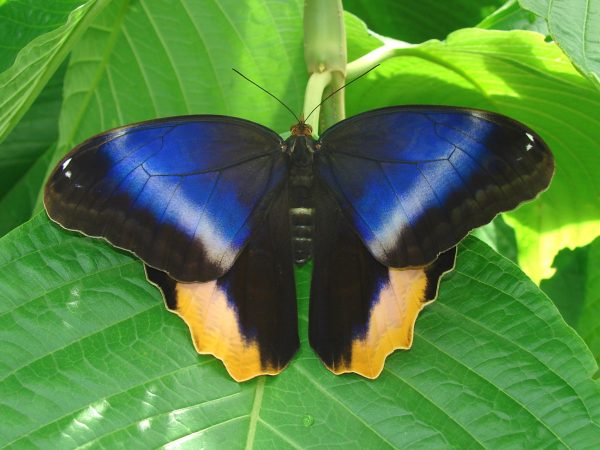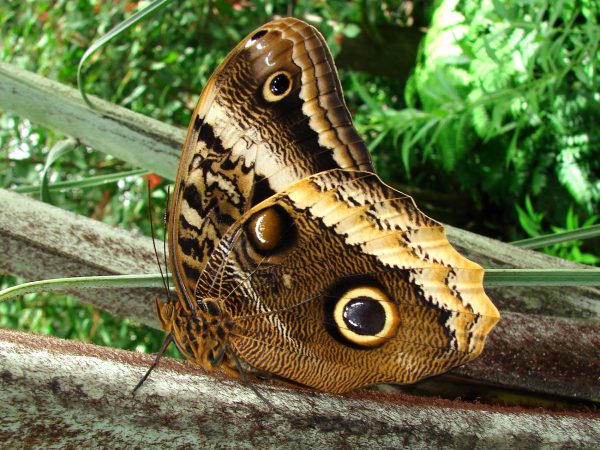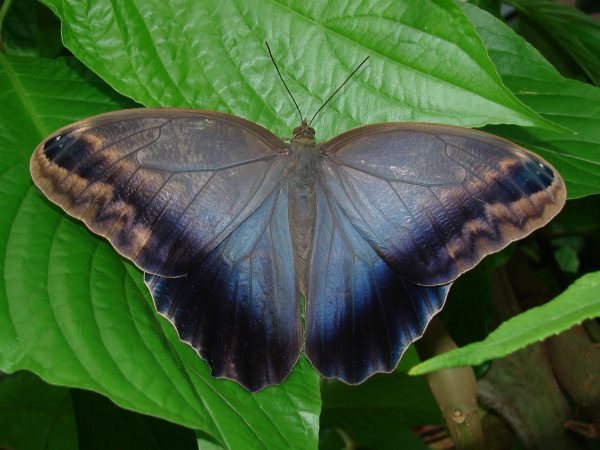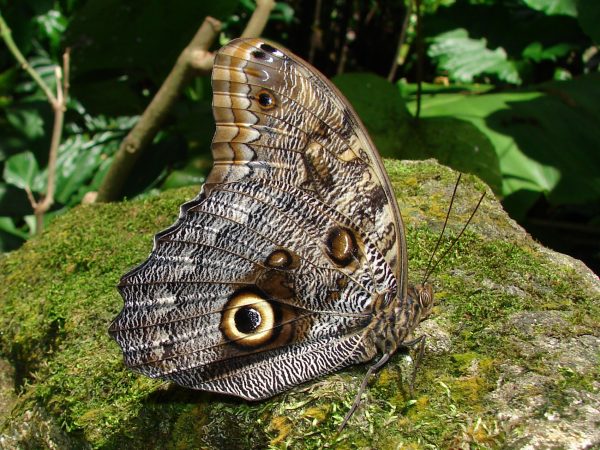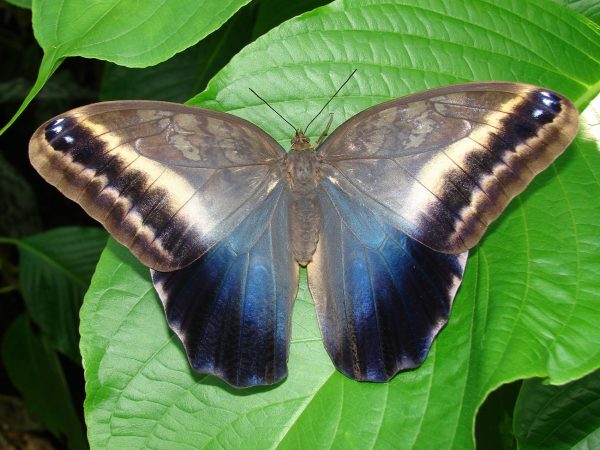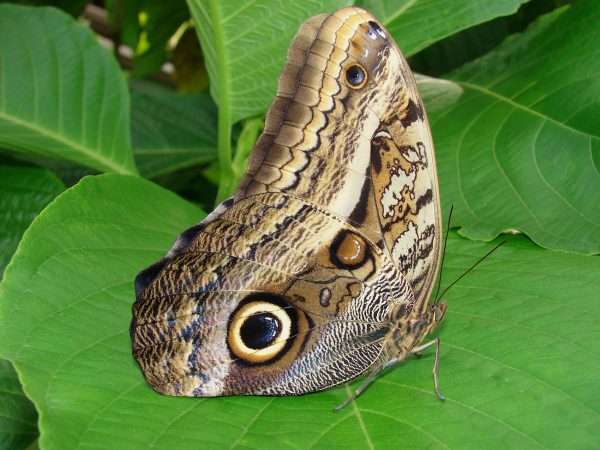With everything going on in the world and here at the Museum, there hasn’t been a whole lot of time for rambling. Although we had to close the Museum for some time due to the pandemic, we do have some good news to share. As you might know, our Butterfly Rainforest exhibit carries permits to bring these exotic species of butterflies here for you to experience, and we follow strict containment rules to make sure they do not escape and become invasive species in Florida.
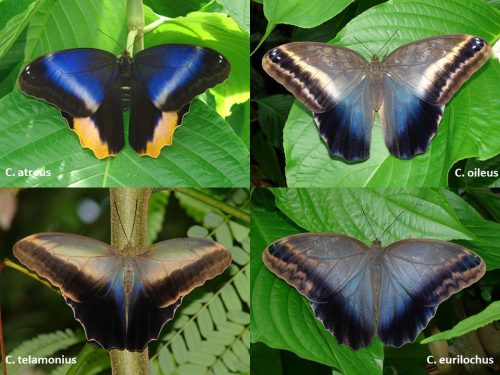
During the closure we were granted a new series of permits which allow us to bring you some new species we’ve never had, and some fantastic species we haven’t had in a very long time. Next time you visit, you might find some delightful new surprises!
The Rambles will be highlighting these new and returning species in the coming months but for now let’s talk Owl butterflies. Through most of the Butterfly Rainforest’s existence we have had the Common Owl butterfly, Caligo telamonius (incorrectly referred to as Caligo memnon). Don’t get us wrong, it’s a great species of butterfly and we love them but why have one Owl when you can have four!
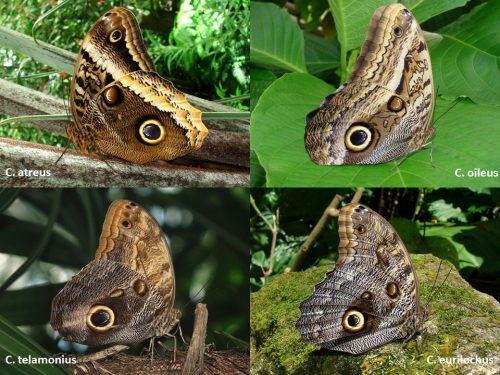
Now, visitors to the Butterfly Rainforest can see all four of our Owl butterfly species at once if they have a good eye! Please welcome the Magnificent Owl (C. atreus), the Cream-striped Owl (C. oileus) and the Giant Forest Owl (C. eurilochus). Like the Common Owl, all three are crepuscular—most active at twilight—and spend much of the day feeding on fruit or hiding under the shade of trees. They also hail from Central and South America, just like the Common Owl.
We very much hope you’ll come visit us and check out these new additions—and keep a look out for other new species!
Caligo atreus
Caligo eurilochus
Caligo oileus
